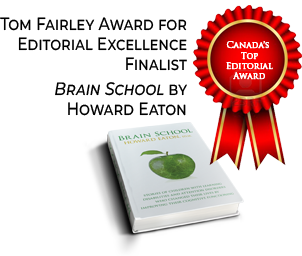Contents:
- Balance of dialogue to narrative
- Opening pages
- Dialogue tags
- Action tags
- Tom Swifty adverbs
- More dialogue tips
This is the third article in my series on how to write effective dialogue in fiction. In the first article, I covered foreign accents and dialects (you can read that post here). The second covered the essentials: realism through artifice, the four purposes of dialogue, and creating distinction between characters (read that post here). Today, I’ll focus mainly on the mechanics of dialogue—dialogue tags—but first I’ll explain how to balance dialogue and narrative.
1. Balance of dialogue to narrative
In the 19th century, when written fiction first began its dramatic rise in popularity, the ratio of dialogue to narrative was, in general, less balanced than it is today, with authors favouring narrative and expository description over dialogue. Thomas Hardy comes to mind, with his long pages of descriptions of the settings of his novels with little dialogue to break it up. In those days, the pace of life was slower, and that was reflecting in a more leisurely pace of reading, so long blocks of narrative—which are always read at a slower pace—were more commonplace. But in today’s hectic, multi-tasking world, just as the pace of life is faster, so do readers often prefer a faster-paced book. And dialogue fulfills that need; the more dialogue, the faster the pace.
Authors sometimes ask me what the ratio of dialogue to narrative should be, as if there’s a magic formula. But there is no “rule,” not even a soft one, for this question—each genre, each story, and each author is different, with different dialogue requirements. That said, for new authors writing popular fiction, a 50-50 balance between dialogue and narrative is something you may wish to aim for.
I’ve seen manuscripts with 90% dialogue as well as the other extreme, 90% narrative, and neither works very effectively. Too much dialogue without a narrative break results in “talking heads”; after a page or so, this begins to sound like disembodied voices floating off the page with no sense of the characters being grounded in a physical scene or location or even physical bodies. Conversely, readers can become weary of too much narrative without a break. The eye needs a visual break every so often from long, solid blocks of narrative, and dialogue creates some white space on the page. To that end, try to alternate your dialogue with narrative in a reasonably even fashion.
If you find yourself with too much dialogue, examine it closely to see whether it creates conflict, moves the plot ahead, or builds character. If not, sum it up in narrative form. And if you’ve got too much narrative, unearth the conflict between two or more characters and turn it into dialogue. In fact, this is a good exercise whether or not you think you have too much or too little of either.
2. A note on opening pages
Allow yourself to go a little heavier on dialogue in the opening pages of your novel. That’s because of what I mentioned above—dialogue is fast-paced, and you’re more likely to hook your readers with a brisk pace at the outset. Also, handled well, dialogue can reveal character faster than narrative does, and some immediate insights into your characters are a good way to lure readers in.
But it’s got to be compelling dialogue, and particularly in those first pages, it should fulfill all four of the purposes that I wrote about in my second blog post in this series, not just one of them: it should heighten conflict, advance the plot, develop characters, and provide backstory.
3. Dialogue tags
A dialogue tag, also called a dialogue attribution, is the he said, she said part of the sentence of dialogue that identifies for the reader who is speaking. A dialogue tag is the telling part of the sentence, while the actual dialogue is showing. When you use a tag, it’s you, the author, telling the reader who is speaking. (See my article on showing versus telling in fiction.)
There are several “rules” concerning dialogue tags that all fiction writers should respect—and then, of course, break sometimes, after they’re thoroughly learned. If you break too many of these rules too often, however, your writing will seem amateurish and outdated, so break them with discretion.
He said, she said . . .
For 90%-95% of your tags, use the verb said. But novice writers sometimes make the mistake of thinking said is boring or repetitive, so they hunt for fancy synonyms like intoned, exhorted, averred, postulated, posited, opined, articulated, queried . . . the list is endless. Avoid these overblown synonyms, and please, never, ever use the tag ejaculated—unless you’re trying to be clever in a sex scene, and probably not even then.
While these overblown tags were much more commonplace in past centuries and decades, modern tastes in writing call for the simpler verb said. And for good reason: said is invisible to readers—our brains are so familiar with it that we gloss right over it without interrupting the flow of the dialogue. More elaborate verbs subtly jar readers out of the dialogue, breaking the flow, telling instead of showing even more than said does. That’s because the verb is conveying the emotion, which should be the job of the dialogue itself. Artificial-sounding synonyms for said are sometimes called said bookisms. Don’t ask me why.
Other acceptable replacements for said are asked and replied. And there are plenty of less visible verbs you can use very occasionally, such as murmured, whispered, bragged, exclaimed, agreed, admitted, confessed, stammered, yelled, mumbled, muttered, lied, interrupted, cried, complained, demanded, argued, snapped. These do convey emotion, but more quietly than true said bookisms. Google “synonyms for said” and you’ll find lots more of these. But use them judiciously or it’ll look as if you spend Saturday nights reading your thesaurus for fun.
He hissed, she chortled . . .
Avoid using human or animal noises or facial expressions in place of said. “Get out of my house!” he hissed. “You think I’m afraid of you?” she laughed. People can’t physically speak words and hiss or laugh at the same time. There are exceptions, of course—in the right situations. Very occasionally, people might bark or scream their words, for example. How to know the difference? Sometimes it just comes down to using your ear. If it “sounds” okay in the context, then use it—once or twice in your story.
Other common verbs that are wrongly used as dialogue tags are giggled, breathed, growled, snarled, groaned, smirked, chirped, chortled, smiled, sighed, yawned, huffed, warbled, panted, purred, squeaked, sneered, roared, snorted. Check all your tags—are they noises or facial expressions? Then they’re not in fact synonyms for said. Instead, write: “Get out of my house!” he said, his voice an angry hiss. “You think I’m afraid of you?” she said, laughing. “Okay,” he said, smiling wryly. “Oh no,” she said, groaning. “Oh yes,” she said, her voice a singsong chirp.
Be aware, if you use Google to find synonyms for “said,” that there’s a lot of misinformation out there. A cursory search showed me several websites that gave lots of human and animal noises as acceptable “synonyms” for said. Especially if you’re a newer writer, it’s best just to stick with the advice I’ve given here. (And yes, I know there are all kinds of famous authors out there who break these “rules” regularly. They can get away with it because their writing is otherwise exceptional or well known. But your job, as a newer writer, is to show emotion through the dialogue’s words themselves, not through the tags.) Exception: it’s more acceptable to see these types of verbs in children’s, middle grade, and YA fiction than in adult fiction.
Be a dialogue-tag minimalist
Keep dialogue tags to the minimum necessary. Remember, tags are telling, and too many of them interfere with the flow of the dialogue and jar readers out of it. If you have only two characters conversing, it’s not necessary to use a tag for each piece of dialogue. For at least a few lines, it should be obvious that the dialogue is alternating. But don’t use them so infrequently that you make readers backtrack, counting lines, to figure out who’s speaking (I don’t know any reader who isn’t annoyed by this!). On the other hand, if you have more than two characters talking, be sure to identify who’s saying each line. Readers shouldn’t have to work at reading your dialogue, nor should you ever let them be jarred out of the story.
Always read your dialogue aloud to make sure you aren’t using unnecessary tags. A great exercise is to try taking out all the tags, and then adding back in only the ones that are essential to comprehension.
But . . . for longish monologues, write no more than a few sentences or a short paragraph without adding a new tag, even if you have to break up the monologue. Readers will appreciate the mental and visual break, and the speech will flow much more easily.
4. Action tags or beats
Action tags are small actions, gestures, facial expressions, or other body language interspersed in the dialogue that identify who the speaker is without using a tag like said. Action tags are also sometimes called action beats because they provide a beat or a pause in the dialogue, which is good for pacing. I’m a big fan of action tags because they serve multiple purposes: 1) they identify the speaker, 2) they avoid the said tag, so they show rather than tell, 3) they help reveal more of what’s going on in the scene, and 4) they reveal character traits and idiosyncrasies. Here are some examples:
→ Before: “Where did I put the password?” Keith said, his hand trembling as he fumbled for the important scrap of paper.
→ Before: “Where did I put the password?” Keith said. His hand trembled as he fumbled for the important scrap of paper.
→ Better with action tag: “Where did I put the password?” Keith’s hand trembled as he fumbled for the important scrap of paper.
Action tags can be fuller sentences like the one in my example, or they can be as simple as a subject and a verb: He grimaced. Isabel smiled. He scratched his nose. She pouted. She flipped her hair back. Jason laughed. She fiddled with her ring. He breathed heavily.
To make the most of action tags, have them showing specific character quirks (which add to character development) or in some way adding to the scene’s development. But, just like everything else with creative writing, balance is key. Use them to add variety, but don’t overuse them, and don’t always place them evenly. They can go at the beginning, in the middle, or at the end of the line or lines of dialogue. For example:
→ Isabel tested the door. “My dad is in this room. We’ll need to let them out eventually.”
→ “My dad is in this room.” Isabel tested the door. “We’ll need to let them out eventually.”
→ “My dad is in this room. We’ll need to let them out eventually.” Isabel tested the door.
5. Tom Swifty adverbs
These are adverbs ending in ly that modify the word said, resulting in telling readers how something is said, rather than showing it. The unfortunate Tom Swift is the protagonist in a series of adventure books for boys that became notorious for relying on these types of adverbial dialogue tags, which evolved into “Tom Swifty” puns. The joke has spawned thousands of these puns, the archetype of which is “We must hurry,” said Tom swiftly. Here are a couple more: “I only have clubs, spades, and diamonds,” said Tom heartlessly. “I don’t much like painting,” said Tom uneasily. “Don’t sit at the back of the boat,” said Tom sternly. (Just google “Tom Swifties” to read countless others.)
While these may be clever, they’re now nothing but embarrassing for the authors of these books. The point here is to avoid becoming an author who’s the butt of jokes because you abuse adverbs in your dialogue tags. For the most part, the dialogue itself should carry the responsibility for showing the emotion of what’s being expressed, without the need for adverbs. The exception is when understatement, irony, or sarcasm is used. If a simple “Please” is being stated sarcastically, for example, it may be necessary to show that by using that adverb. “Please,” he said sarcastically. (Better, simply write, “Please,” he said, oozing with sarcasm. Or use an action tag.)
6. A few more dialogue tips:
- Dialogue tags needn’t always go at the end of the line or lines of dialogue. For variety, place them in the middle, where a natural pause might occur after a comma or a dash or a period. Examples:
→ “You’re not making any sense—because they’re dead! We’ll never see them again,” Jason said.
→ “You’re not making any sense,” Jason said, “because they’re dead! We’ll never see them again.”
→ “You’re not making any sense—because they’re dead!” Jason said. “We’ll never see them again.”
But avoid beginning a line of dialogue with he said or she said. Our minds have been conditioned to read the dialogue first, which keeps us anchored in the fictional world. And said tags maintain their “invisible” status at the end of a line of dialogue, whereas they jump out at the reader if they’re placed at the beginning. But it’s perfectly okay to use an action tag at the beginning.
- Vary the length of lines of dialogue. If one character has a lot of lines, then give the next speaker fewer lines. Mix it up. Regularly intersperse dialogue with action tags and narrative or expository description. The reader’s eye wants to see a little white space on the page.
- Avoid overusing a character’s proper name in both dialogue and action tags, especially if it’s your POV character. Readers should be able to recognize your POV character by how he speaks, his mannerisms, etc., so it’s not necessary to use his name in each tag. Use pronouns when it’s already clear who the speaker is and a proper name isn’t essential to the meaning.
- If you have only two characters conversing, try occasionally using the recipient’s name in the dialogue itself. This will tell readers that it’s the other person speaking. “Okay, Jason, I’m not happy about this but I’ll do it anyway, just for you.” But people don’t use each other’s proper names very often in conversation, so use this trick frugally.
- Should the tag said come before the name (or pronoun) or after? Should you write “Tom said” or “said Tom”? Some “experts” say that modern writing should use “Tom said” and “she said,” and it’s more old-fashioned to write “said Tom.” I say it depends on content and context. If your story is set in the past, there’s nothing wrong with writing “said Constance.” And if it’s set in the present, you can try mixing them up. Listen to your writing; hear it in your mind—and out loud too. Which sounds best to your writer’s ear? However, I’d suggest leaving “said she” and “said he” for poetry.
In summary
In this post, I’ve covered some of the nuts and bolts of dialogue writing, focusing on how to achieve a balance of dialogue to narrative, and giving you plenty of information on how to write effective dialogue tags. In my next posts, I’ll address the following:
- Conciseness in dialogue
- Contractions
- Punctuation
- Info-dumping in dialogue
- Writing internal monologue – direct and indirect thoughts
For more information on dialogue writing, see see Part I of the series, covering how to write authentic dialects and foreign accents, here. See Part II of this series, Dialogue Essentials, here.





9 Responses
Thanks! That was a great blog!
Thanks for your comment, Kevin. I know your writing, and I know you don’t make many of these mistakes. Glad you enjoyed the post nonetheless!
Dialogues tags are the most common writing errors I come across. Next to exclamation marks, that is.
Arlene, thank you for your dialogue-in-fiction and POV posts. You explained the differences very well and the examples were great! It seems the more I learn, the more confused I become, unfortunately. Perhaps you can give me some advice. My current WIP concerns two people (lovers) who have been apart for a year and are trying to reconnect. One pov isn’t more important than the other. My problem is needing to show each person’s thoughts and reactions in one dialogue-heavy scene without head-hopping. Am I trying to do the impossible? I think I’m jumbling subjective omniscient with third person omniscient and third person limited. Thanks so much for your blog! Karen
Karen, thanks so much for your comment. My first reaction is that yes, you’re trying to do the impossible, but really, there’s no pat answer to your question, unfortunately. It depends on several things, the most important of which is, how deep are you trying to go with your two characters’ POVs? Achieving the deepest POV possible (and, as a result, achieving the closest connection possible between your characters and your readers) means having only one POV character per scene, in which case you could alternate POV scenes between your characters if you want to show readers each of their emotions and thoughts individually.
That’s your first choice, and the second is learning to write omniscient POV well enough to pull off showing the emotions and thoughts of both characters in one scene. Omniscient is by far the hardest POV to master (other than 2nd person), but if you can master it and do it well, it can be very effective. Here’s one of the best articles I’ve found on what omniscient POV is and how to write it. http://www.scribophile.com/academy/using-third-person-omniscient-pov
To sum up, I should say that you can do anything you like, break any rules you like, if you feel it will improve your fiction. But trying to show two POVs in one scene tends to weaken the emotional depth of both characters, even if you’re skilled enough to write omniscient POV. If you aren’t, you risk head-hopping, which is never a good thing (even though famous authors do it, something I hate to see).
Thank you, Arlene, for your fast reply! I truly appreciate your taking the time to answer me. *sigh* I had a feeling I was reaching for the proverbial moon. *g* Time for re-writes!
You’re welcome! Yes, I think you’re best off to rewrite with a view to giving each of your characters separate scenes/chapters with their own deep points of view in each. This may mean a lot of work, but it’ll be worth it in the end. Readers will be able to relate to and connect much more closely and deeply with each character on his/her own merits, rather than sorting through a jumble of head-hopping if you show both characters’ thoughts and emotions in the same scene.